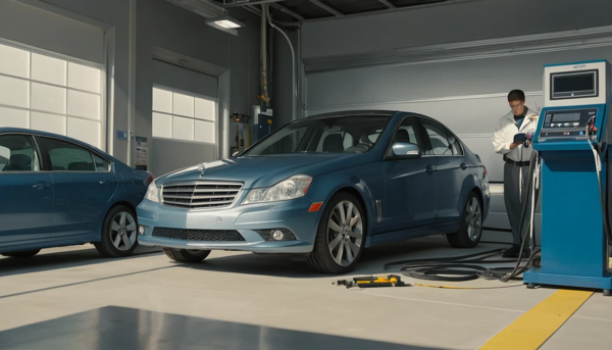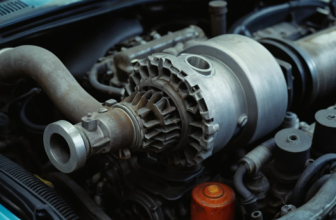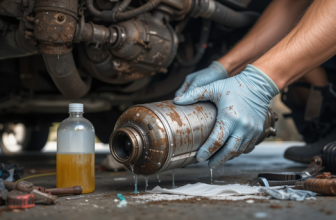How to pass an emissions test? Discover expert tricks, easy fixes, and what to avoid so your car passes the test with flying colors.
How to Pass an Emissions Test – The Complete Driver’s Guide 🚗
Is your inspection date creeping up and you’re worried your car won’t pass? 😰
You’re not alone! Many drivers fail emissions tests each year. But, you can pass with the right steps. Let’s make it simple and help your car pass.
What Is an Emissions Test and Why Does It Matter? 🌍
Emissions tests check how much pollution your car makes. States require these tests to keep the air clean.
If your car fails, you might:
- Not be able to drive it legally
- Have to fix it and spend money
- Face fines or delays in registration
So, it’s important to prepare. Most problems can be fixed with some planning.
Know the Emissions Testing Rules in Your State 🗺️
Different states have different rules. Some test every two years, others only for older cars.
Check these things:
- Testing frequency
- Age exemption rules
- Type of test required (OBD-II scan, tailpipe test, etc.)
- Location of certified testing centers
💡 Pro Tip: Visit your state’s DMV website before your test date.
Signs Your Car Might Fail an Emissions Test 🚩
Don’t wait for the test to find out something’s wrong. Watch for these red flags:
- Check Engine Light is on
- Poor gas mileage
- Rough idling or engine misfiring
- Smell of fuel or exhaust inside the car
- Visible smoke from the exhaust
If you see any of these, get it checked now.
How to Prepare Your Car for the Emissions Test 🔧
Follow this smart checklist before going in:
- Change your oil
- Replace dirty air filters
- Use a fuel additive cleaner
- Make sure the gas cap is tight and seals well
- Inflate tires to proper PSI (improves engine load balance)
- Clear any Check Engine codes
- Drive your car at highway speeds prior to the test
✅ Yes, warming up the engine makes a real difference.
Drive Your Car Before Testing 🛣️
This is one of the most overlooked tricks. A cold engine burns fuel less efficiently.
What to do:
- Drive for 15–30 minutes before your test
- Get the catalytic converter hot—it needs to be in its ideal operating range
- Combine city and highway driving
Why it helps: A warm engine produces fewer emissions and performs better under test conditions.
🔍 Table: Best Pre-Test Maintenance Tasks
| Task | Why It Helps | Cost Estimate |
|---|---|---|
| Oil Change | Removes dirty oil that affects engine emissions | $40–$80 |
| Spark Plug Replacement | Helps engine burn fuel more efficiently | $60–$150 |
| Air Filter Change | Ensures proper air-fuel mixture | $20–$50 |
| Fuel Additive Cleaner | Cleans injectors and fuel lines | $10–$25 |
| Gas Cap Replacement | Seals pressure to avoid vapor leaks | $5–$15 |
Check Your Check Engine Light 💡
A lit “Check Engine” light = automatic failure.
Even if your car is running perfectly, the onboard diagnostics system (OBD-II) will flag it.
If the light is on:
- Use a code scanner or visit a local mechanic
- Fix the underlying issue (don’t just clear the code)
- Drive for a few days to reset your car’s monitors
Reset Your Drive Cycle 🚗
After clearing error codes, your car needs to complete a full drive cycle before testing. This ensures all internal monitors are functioning.
Typical drive cycle includes:
- Accelerating and decelerating at various speeds
- Driving with constant throttle for several minutes
- Idling while stopped
- Restarting the engine
Don’t rush to test right after clearing codes. Wait until all monitors show “Ready.”
Use an Emissions Test Pre-Check App 📱
Many vehicles now support OBD-II Bluetooth scanners and apps.
Try apps like:
- Torque
- Car Scanner
- OBDeleven
- BlueDriver
These apps tell you:
- Which monitors are incomplete
- Any pending error codes
- If your car is “test ready”
📲 It’s like a cheat code for emissions tests!
When to Use Fuel Additives or Cleaners 🧪
Fuel system cleaners can remove carbon buildup and improve combustion. Use them about a week before testing.
Popular additives include:
- Sea Foam
- Techron Concentrate Plus
- Lucas Upper Cylinder Lubricant
Make sure you drive enough miles after adding them to flush out gunk.
🧼 Table: Best Fuel Additives to Prep for Emissions Test
| Additive Name | Benefit | When to Use |
|---|---|---|
| Sea Foam Motor Treatment | Cleans injectors + valves | 7 days before test |
| Techron Concentrate | Reduces carbon build-up | 1 tank before testing |
| Lucas Fuel Treatment | Lubricates + improves efficiency | Weekly before testing |
Replace a Bad Oxygen Sensor 🧯
A bad O2 sensor messes with your engine’s air-fuel mix. This leads to more emissions and a failed test.
Symptoms include:
- Check Engine light
- Poor MPG
- Engine surging or hesitation
Mechanics can quickly run diagnostics and replace it. Don’t ignore it.
Consider a Catalytic Converter Cleaning 😮💨
Your catalytic converter is key during an emissions test. If it’s clogged, emissions go up.
Try these before replacing it:
- Use a cat-safe cleaner (Cataclean)
- Drive your car at higher RPMs for 15 minutes
- Remove and inspect if your car is older
Avoid Testing Right After a Repair 🛠️
Your car needs time to adjust after a repair. Sensors must finish a full diagnostic cycle.
Wait at least 1–2 days of driving after clearing codes or fixing issues before testing.
Keep Your Battery Charged 🔋
Disconnecting the battery resets your car’s computer. This can erase emissions monitor data, leading to automatic fail.
Avoid disconnecting the battery before testing, or drive at least 100 miles to re-complete the cycle if you did.
Don’t Test with a Full Tank of Gas ⛽
Aim for 1/4 to 3/4 full tank. Why?
A full tank can pressurize the evaporative system and trigger small leaks, hurting your test results.
🧠 Stick to a comfortable mid-level fuel amount.
🔧 Table: Quick-Check List for Test Day
| Check Item | Pass/Fail Risk if Ignored? | Final Tip |
|---|---|---|
| Engine Warmed Up | High | Drive 20–30 mins before test |
| Check Engine Light Off | Automatic Fail | Scan and fix codes |
| Gas Cap Secure | Moderate | Double check before test |
| Tire Pressure Balanced | Low | Helps in dynamometer tests |
| Air Filter Clean | Moderate | Easy & cheap fix |
Final Thoughts – Pass With Confidence 😎
Passing an emissions test doesn’t have to be stressful. Prepare your car and know what to expect, and you’ll do great.
Here’s your takeaway checklist:
- Fix warning lights and codes early
- Warm up your car before testing
- Use quality fuel and cleaners in advance
- Double-check the gas cap and air filter
- Use an app or scanner to verify readiness
Take care of your car, and it’ll take care of you—when test day comes around. ✅
FAQs
How do I know my car is ready for an emissions test?
Use an OBD-II scanner. It shows if all system monitors are “Ready”. Also, it checks for Check Engine codes.
Why did my car fail emissions even with no engine light?
Maybe your system monitors aren’t complete. Or, there could be fuel vapor leaks. Or, some parts might be failing but not showing a code.
Can bad spark plugs cause emissions test failure?
Yes! Bad spark plugs mean incomplete combustion. This leads to higher emissions and can cause a test failure.
How many miles should I drive after clearing codes?
Drive 100–200 miles. Mix highway and city driving. This makes sure all readiness monitors reset.
Does idling help before an emissions test?
No. It’s better to drive at different speeds. Idling doesn’t warm the catalytic converter well.
References
https://www.epa.gov/vehicle-and-engine-emissions-testing
https://driving-tests.org/beginner-drivers/emissions-test-guide
https://www.nhtsa.gov/equipment/emissions-control-systems





